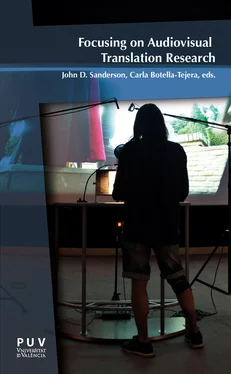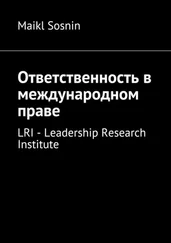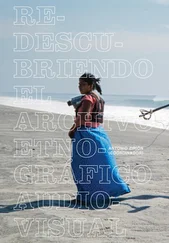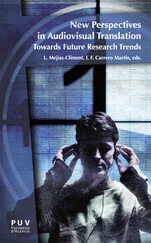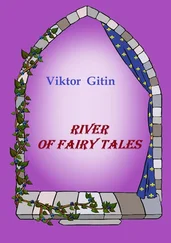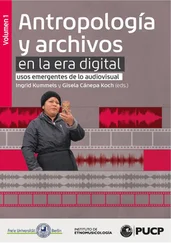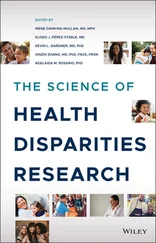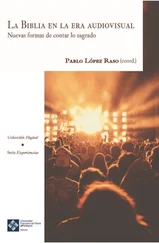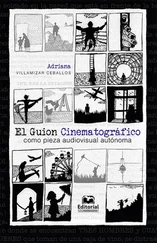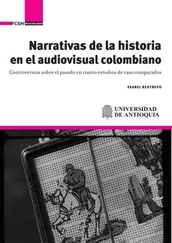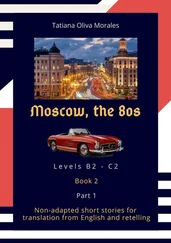AAVV - Focusing on Audiovisual Translation Research
Здесь есть возможность читать онлайн «AAVV - Focusing on Audiovisual Translation Research» — ознакомительный отрывок электронной книги совершенно бесплатно, а после прочтения отрывка купить полную версию. В некоторых случаях можно слушать аудио, скачать через торрент в формате fb2 и присутствует краткое содержание. Жанр: unrecognised, на английском языке. Описание произведения, (предисловие) а так же отзывы посетителей доступны на портале библиотеки ЛибКат.
- Название:Focusing on Audiovisual Translation Research
- Автор:
- Жанр:
- Год:неизвестен
- ISBN:нет данных
- Рейтинг книги:4 / 5. Голосов: 1
-
Избранное:Добавить в избранное
- Отзывы:
-
Ваша оценка:
- 80
- 1
- 2
- 3
- 4
- 5
Focusing on Audiovisual Translation Research: краткое содержание, описание и аннотация
Предлагаем к чтению аннотацию, описание, краткое содержание или предисловие (зависит от того, что написал сам автор книги «Focusing on Audiovisual Translation Research»). Если вы не нашли необходимую информацию о книге — напишите в комментариях, мы постараемся отыскать её.
Focusing on Audiovisual Translation Research — читать онлайн ознакомительный отрывок
Ниже представлен текст книги, разбитый по страницам. Система сохранения места последней прочитанной страницы, позволяет с удобством читать онлайн бесплатно книгу «Focusing on Audiovisual Translation Research», без необходимости каждый раз заново искать на чём Вы остановились. Поставьте закладку, и сможете в любой момент перейти на страницу, на которой закончили чтение.
Интервал:
Закладка:
In the case of Spain, for example, Talaván (2006, 2010, 2011) has conducted pioneering and extensive research in the field of active subtitles in the L2 classroom. She analyses the potential of subtitles as a support for enhancing language skills, and subtitling as an active task for students to improve their written skills in an L2, distinguishing between merely viewing subtitles (a passive activity) and allowing students to participate in the subtitling process as a concrete activity (active subtitling). Talaván (2012, 2013) justifies the use of subtitles in the L2 class in theory and practice by making use of mixed methods to validate the potential of active subtitling for the improvement of linguistic skills. Talaván and Rodríguez-Arancón (2014) examine the benefits of written and translation skills by using reverse subtitling within a collaborative online setting. Using AVT as an innovative method of teaching, Talaván and Ávila-Cabrera (2015) assess the combination of dubbing and subtitling activities within a quasi-experimental setting. This research aims to improve translation, written and oral production skills through the dubbing and reverse subtitling of videos.
LeVIS ( http://levis.cti.gr/index.php?lang=en), Learning via Subtitling , is a pioneering project in which the creation of materials for the L2 class along with video subtitling activities via the LvS software created exclusively for the project were the main goals (Sokoli, Zabalbeascoa and Fountana 2011). This multicultural project involved six European countries (Hungary, Romania, UK, Portugal, Greece and Spain), most of the participants being from a university background. Among the most important findings, the researchers pinpoint the manner in which the participants benefitted from the different activities created for the project independently of their linguistic level, language, etc. A second major project involving the creation of AVT activities is ClipFlair (Baños and Sokoli 2015; Sokoli 2006, 2015). This platform ( http://clipflair.net/) allows users to interact with videos to which voice and text can be added, that is, they deal with diverse AVT modes such as dubbing, voiceover, direct and reverse subtitling and the like. Users can benefit from diverse platform tools (activity, video and image gallery and studio), different languages and topics for captioning and re-voicing both for the classroom and online learning.
Learning vocabulary is another area that has been researched using AVT activities in the classroom. Talaván (2007) analyses ways of learning vocabulary through the subtitling of authentic videos. A publication worth mentioning in this area is Lertola’s (2012), which she devotes to incidental vocabulary acquisition via subtitling activities for students of Italian as an L2. Sanderson (2015) and Marzà and Torralba (2015) examine language learning on the basis of subtitled cartoons. Whereas the former analyses the way foreign idioms can be taught, the latter approach their study to incidental learning in Spain, which is a dubbing stronghold. In addition, since language teaching directly concerns culture, there are also studies worth mentioning on improving cultural awareness and intercultural content (Boreghetti 2011; Borghetti and Lertola 2014) through the use of subtitling.
Some of the most current AVT modes that concern accessibility can also be applied to the teaching of foreign languages. Talaván and Ávila-Cabrera (2016) conducted a project at the Spanish National Open University (UNED), in which 128 videos were subtitled collaboratively from English into Spanish using Amara ( http://www.amara.org/es/) and making them accessible to a wider audience by finally uploading them to YouTube. The aforementioned authors (2017) have continued to research this field, which has begun to be referred to as social subtitling (non-professional subtitling with the aim of making audiovisual materials accessible to a wider audience), and also within the UNED, university students subtitled videos interlingually (six from English to Spanish and 10 from Spanish to English) on university-related contents and commissioned by CanalUNED ( https://canal.uned.es/), the UNED audiovisual repository. Diverse subtitling software programmes were offered to participants for the purposes of the project, once again including Amara. Both projects therefore demonstrate how social subtitling can benefit students in terms of linguistic improvement as well as gaining insights into translation strategies and the conventions of this AVT mode.
3 The experiment
A multi-strategy design (Robson and McCartan 2016) has been chosen for the present study from among the various methods available in the field of L2 teaching. The reason for this is that the researcher has made use of both qualitative data in the form of a pre- and post-study questionnaire and quantitative data by means of written English assessments. The research was designed around the following research questions, which were addressed by analysing the collected data:
• Is active subtitling a useful tool for teenage students’ written English (as an L2)?
• Are subtitling tasks entertaining and useful for the purposes of L2 learning in the case of teenagers?
This research is quasi-experimental inasmuch as the allocation of the population was not random. Both the experimental and control groups provided quantitative data through the assessment of their English compositions and, in the case of the former, pre and post-study questionnaires were filled out in order to include more data on their level of proficiency in English, familiarity with ICT tools, etc. Data triangulation was then used to obtain more reliable results (Denzin 1988) in terms of the aforementioned data sources. Regarding the treatment of these data, the sequential explanatory design (Creswell 2003) was used to examine the quantitative data. The qualitative data were then scrutinised with the aim of validating or refuting the findings previously obtained.
The project took place during the 2015-2016 academic course in a private centre supported by public funds named Colegio de Jesús, based in the north of Madrid. This school uses a bilingual project called Programa Beda ( www.ecmadrid.org/programas/programabeda) which is intended for religious schools in Madrid. Their main goals include fostering students’ English skills by implementing activities as well as promoting communication in English, offering students the opportunity of taking the Cambridge English language assessments, providing the students with English native speakers as language assistants in infant, primary and secondary classes and offering them the opportunity of participating in English summer camps and staying in British schools during the summer holidays, among other things.
The author of this paper was the only researcher to conduct this study. The chosen course was the third course in secondary school and, considering that text-books are usually changed every four years in Madrid, it must be said that these students had just received a new international English course book for that school year. This was Succeed in English (2013), published by Oxford University Press, level B2, in accordance with the Common European Framework of Reference for Languages (CEFRL). Both the students’ book and workbook aim to improve grammar, vocabulary, reading and listening skills and writing, as well as everyday listening and speaking, familiarity with culture and Content and Language Integrated Learning (CLIL) and literature. It also includes a wide choice of audiovisual materials (video and audio) in the digital book that teachers can use in class. This meant that the level of the book was higher than the students’ competences in the different skills, so the use of an innovative tool for the improvement of written work in English (one of the skills with which a considerable number of students have problems) could prove a useful resource. Given that one of the main goals of this project was to evaluate the potential of subtitling as an active task, two groups were chosen and defined. There was a control group made up of 21 students and an experimental group of 31 students. The latter had a number of active subtitling (Talaván 2012) sessions as their innovative task.
Читать дальшеИнтервал:
Закладка:
Похожие книги на «Focusing on Audiovisual Translation Research»
Представляем Вашему вниманию похожие книги на «Focusing on Audiovisual Translation Research» списком для выбора. Мы отобрали схожую по названию и смыслу литературу в надежде предоставить читателям больше вариантов отыскать новые, интересные, ещё непрочитанные произведения.
Обсуждение, отзывы о книге «Focusing on Audiovisual Translation Research» и просто собственные мнения читателей. Оставьте ваши комментарии, напишите, что Вы думаете о произведении, его смысле или главных героях. Укажите что конкретно понравилось, а что нет, и почему Вы так считаете.
